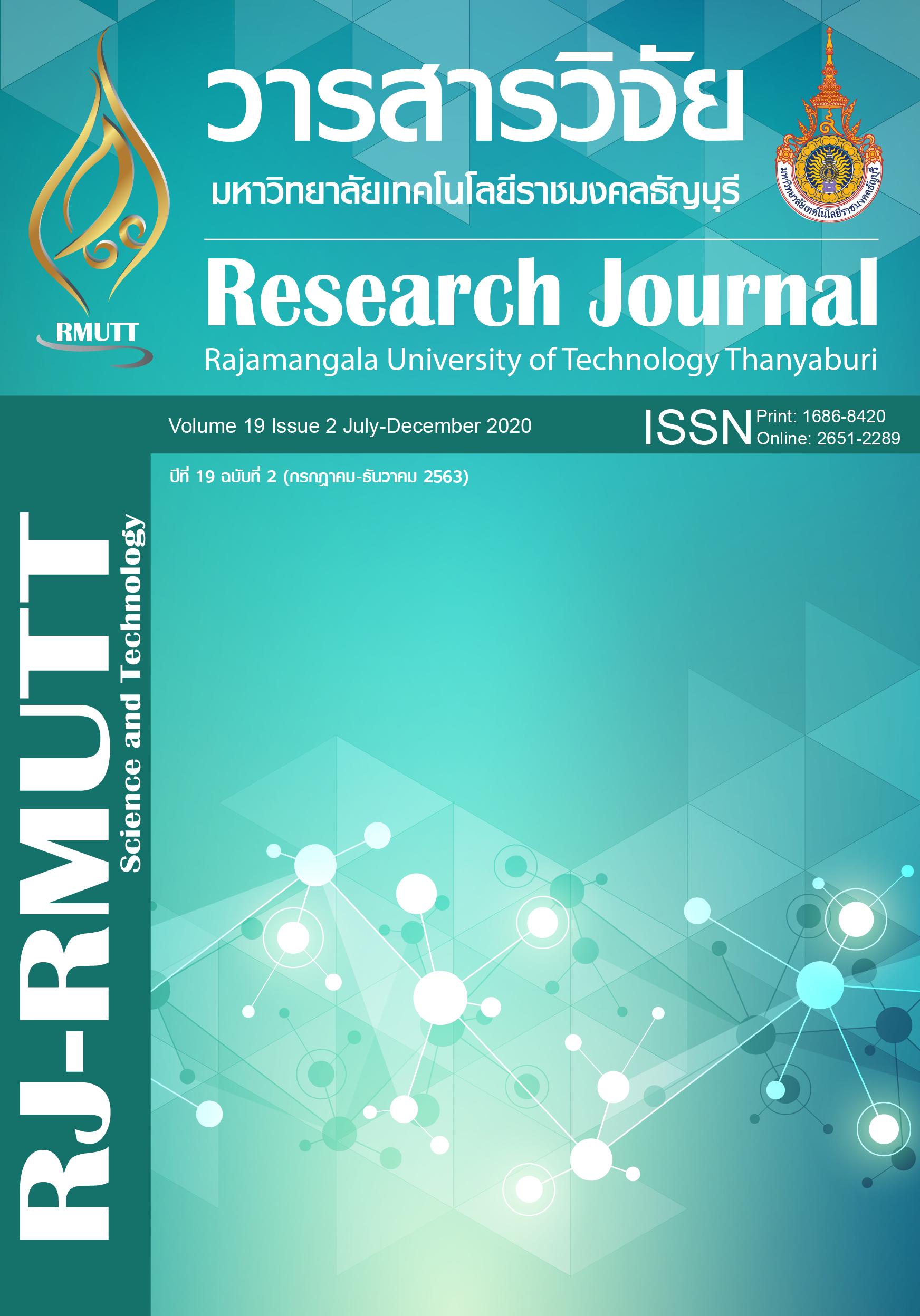Water Quality Improvement by Biological Process for Public Water Resource: A Case Study Bueng Kaennakorn
Main Article Content
Abstract
This research aims to water quality improvement by bioaugmentation process (Biological) in Buen Kaennakorn. The selected microbes consist of 3 stains Pediococcus spp. Pichia spp. and Dekkera spp. that input into 10 points of Buen Kaennakorn. The parameters that effect to eutrophication phenomenon was measured. This research found that temperature in Buen Kaennakorn between 29-35 °C that suitable for growth of organisms, aquatic plants, and algae. The pH at release point of microorganisms was between 7.5-7.9 that also suitable for growth of organisms, aquatic plants, and algae. Dissolve oxygen (DO) was 4.5-10.8 mg L-1. The initial state, dissolve oxygen was less than 5 mg L-1 that was not suitable for rest area. After biological treatment with selected microbes that can be increase dissolve oxygen and lead to high water quality category 2 that suitable for rest area. In term of nitrogen: phosphorus ratio was
R = 11.155 mg L-1 that higher than 10. This ratio was showed the higher nitrogen in water resource and phosphorus was limits the eutrophication phenomenon in Buen Kaennakorn. After biological treatment with selected microbes that can be decrease the nitrogen: phosphorus ratio was R = 6.275 mg L-1 that can be reduced within specified range and was not affect to eutrophication phenomenon. In term of blue green algae that was investigated with optical microscope. The results showed that selected microbe can be destroy and decrease of algae. Therefore, the selected microbe that good choice can be used to water quality improvement in Buen Kaennakorn and effective for water quality improvement.
Article Details

This work is licensed under a Creative Commons Attribution-NonCommercial-NoDerivatives 4.0 International License.
References
Zamparas M, Zacharias I. Restoration of eutrophic freshwater by managing internal nutrient loads A review. Sci Total Environ. 2014;496:551-62.
อ่อนจันทร์ โคตรพงษ์, อัศมน ลิ่มสกุล, วุฒิชัย แพงแก้ว, บุญชอบ สุทธมนัสวงษ์. พลวัตของธาตุอาหารพืช ยูโทรฟิเคชั่น และเมตาบอลิซึม ของระบบนิเวศในพื้นที่ชุ่มน้ำทะเลน้อย [Nutrient dynamics, eutrophication and ecosystem metabolism in Thalenoi wetland]. วารสารการจัดการสิ่งแวดล้อม. 2553;6(2):1–18.
มลิวรรณ บุญเสนอ. นิเวศพิษวิทยา (Ecotoxicology). พิมพ์ครั้งที่ 5. นครปฐม: โรงพิมพ์มหาวิทยาลัยศิลปากร วิทยาเขตพระราชวังสนามจันทร์; 2560.
สันทัด ศิริอนันต์ไพบูลย์. ระบบบำบัดน้ำเสีย Wastewater Treatment System. พิมพ์ครั้งที่ 1. กรุงเทพมหานคร: สำนักพิมพ์ท้อป จำกัด; 2557.
Rajasekhar P, Fan L, Nguyen T, Roddick FA. A review of the use of sonication to control cyanobacterial blooms. Water Res. 2012;46:4319-29.
Sharp R, Khunjar W, Daly D, Perez-Terrero J, Chandran K, Niemiec A, et al. Nitrogen removal from water resource recovery facilities using partial nitrification, denitratation-anaerobic ammonia oxidation (PANDA). Sci Total Environ. 2020;724:138283.
Oelofse A, Pretorius IS, Toit MD. Significance of Brettanomyces and Dekkera during Winemaking: A Synoptic Review. Enol Vitic. 2008;29(2):128-44.
Jiang CL, Cui GB, Fan XQ. Purification capacity of ditch wetland to agricultural non-point pollutants. Huan Jiang Ke Xue. 2004;25:125–8.
บึงแก่นนคร [อินเตอร์เน็ต]. [สืบค้นเมื่อวันที่ 15 เม.ย. 2563]. จาก: https://www.paiduaykan.com/travel
Yi L, Gao B, Liu H, ZhangY, Du C, Li Y. Characteristics and assessment of toxic metal contamination in surface water and sediments near a uranium mining area. Int J Environ Res Public Health. 2020;17:548.
กรมควบคุมมลพิษ. พระราชบัญญัติส่งเสริมและรักษาคุณภาพสิ่งแวดล้อมแห่งชาติ พ.ศ. 2535 กฎ ประกาศ และระเบียบที่เกี่ยวข้องด้านการควบคุมมลพิษ. พิมพ์ครั้งที่ 5. กรุงเทพมหานคร: โรงพิมพ์องค์การสงเคราะห์ทหารผ่านศึก; 2555.
Ansari AA, Gill SS. Eutrophication: Causes, Consequences and Control. 2nd ed. Switzerland: Springer; 2014.
Lemley DA, Adams JB. Chapter 1 Eutrophication. Encyclopedia of Ecology. 2nd ed. Elsevier; 2018.


